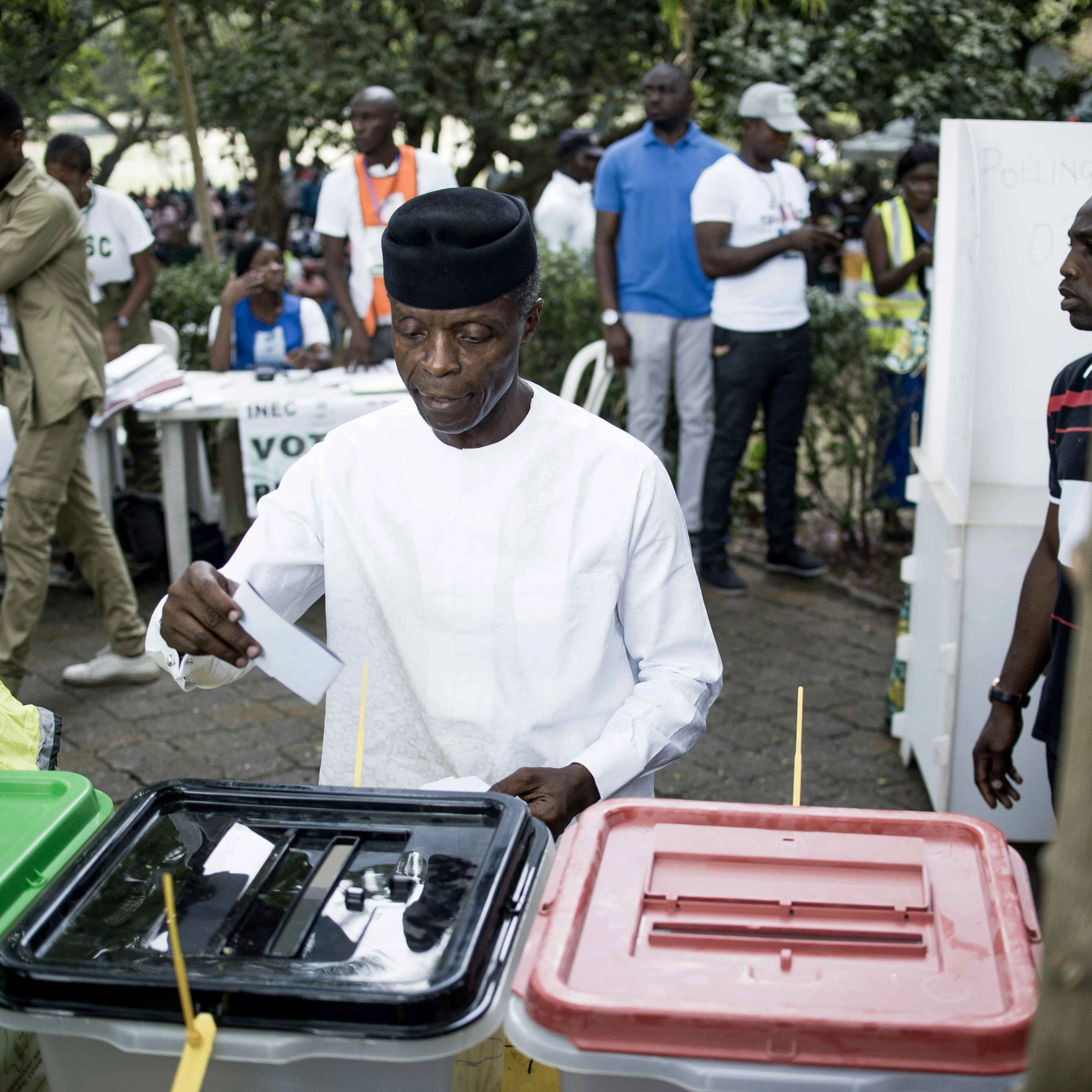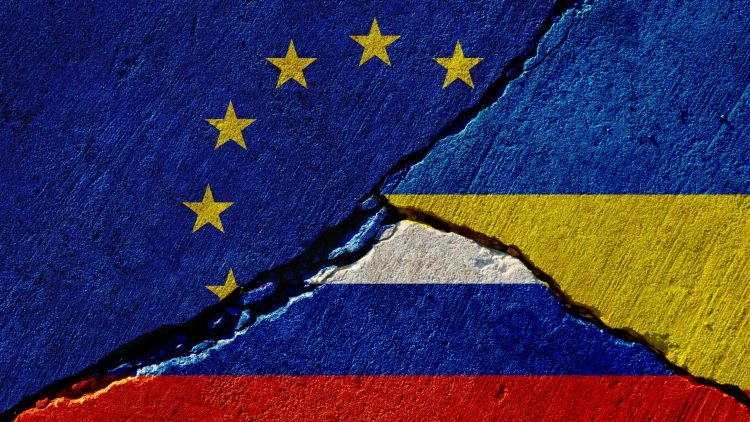This article explores the extent to which the European Union’s (EU) response to the Russia-Ukraine War supports Jean Monnet’s assertion that "Europe will be forged in crises and will be the sum of the solutions adopted for those crises." The 2022 invasion represents a defining geopolitical challenge for the EU, testing its capacity for collective action and reshaping its internal unity and external role as a global actor. The analysis below is based on a case study of the Russia-Ukraine War, drawing on academic literature and official EU sources, including policy briefings and sanctions documentation. It examines EU responses in three core areas: energy security, defence cooperation, and institutional coordination. Structured around two research questions, the essay investigates how the war has influenced EU integration and whether the Union’s reaction reflects crisis-driven advancement. It argues that the EU has demonstrated remarkable adaptability, unity, and policy innovation, particularly in reducing energy dependence on Russia, increasing military support for Ukraine, and coordinating extensive sanctions.
However, the analysis also reveals persistent limitations. Despite institutional agility, many of the EU’s decisions remain intergovernmental, and member states display diverging national interests, particularly in defence and energy policy. While the crisis accelerated short-term cooperation and reform, deeper supranational integration remains uneven and constrained by sovereignty concerns. The essay concludes that the EU’s response both supports and complicates Monnet’s theory. The war has indeed acted as a catalyst for cooperation, yet long-term integration depends not only on crisis but also on sustained political will and strategic cohesion. The case of the Russia-Ukraine war illustrates how the EU is evolving into a more assertive geopolitical actor, shaped by crisis but still negotiating the balance between unity and diversity.
Introduction:
The Russian invasion of Ukraine in February 2022 marked a profound rupture in the post-Cold War European order. It posed not only a direct military threat to European security but also a critical test of the European Union’s (EU) capacity for collective action. Unlike previous challenges such as the Eurozone crisis, the migration wave of 2015, or the COVID-19 pandemic, this war constitutes an overt geopolitical conflict, compelling the EU to reassess its global role. It also shattered the assumption that economic interdependence would guarantee peace, particularly with Russia. The EU’s identity as a “civilian power” was challenged by its sweeping sanctions, military support for Ukraine, and accelerated energy diversification. For many, this response validates Jean Monnet’s assertion that "Europe will be forged in crises...". Others, however, highlight the persistence of intergovernmental dynamics and institutional constraints.
This essay examines how the war has reshaped the EU’s internal unity and external role, focusing on energy, defence, and institutional coordination. It seeks to answer two questions: First, how has the war challenged and reshaped EU unity and global positioning? And second, does the EU’s response reflect Monnet’s crisis-driven integration model? Here, I argue that while the EU responded with unprecedented unity and innovation —particularly in sanctions, defence coordination, and energy— it also exposed the limits of collective action in circumstances where national sovereignty still dominates. Methodologically, this essay employs the Russia-Ukraine War as a case study to explore the EU's response to external crises, drawing on academic literature and primary EU documents to assess shifts in policy across energy, security, and institutional governance. The analysis begins with a brief timeline of the crisis and the EU’s initial response, then explores energy policy, defence integration, and economic/institutional measures. It concludes with an evaluation of whether Monnet’s vision holds in this context.
I – The Unfolding of the Crisis:
To assess whether the Russia-Ukraine war has forged a deeper European Union, it is essential first to examine how the crisis unfolded and the nature of the EU’s initial response. The roots of the current crisis can be traced back to Russia's annexation of Crimea in 2014 and its support for separatist movements in eastern Ukraine, which challenged the European security order. During this period, the EU's response focused primarily on diplomatic engagement and limited sanctions, reflecting a belief that economic interdependence could moderate Russian behaviour. This phase revealed the EU's strategic limitations, as frontline states such as Poland and the Baltic countries called for military preparations, while France and Germany maintained that energy and economic ties could temper Russia's territorial ambitions. Germany’s policy of Wandel durch Handel ("change through trade") and support for projects like Nord Stream 2 reflected the EU’s broader strategy of maintaining economic ties with Russia despite growing tensions. Even after the annexation of Crimea, these projects continued, signalling the EU’s reluctance to shift from a soft-power approach.
However, the 2022 invasion undermined this approach. The EU’s response was rapid: within days, it imposed extensive sanctions and began military and humanitarian support. Yet, this unity masked internal divisions. Countries like Austria, Hungary, and Slovakia initially resisted strong sanctions due to economic concerns, and Orbán’s Hungary notably refused to join the energy boycott. These divergences reflected varying dependencies on Russian energy and differing historical experiences with Moscow. Despite these challenges, the crisis prompted a shift in EU policymaking. For the first time in history, the EU activated the Temporary Protection Directive to manage Ukrainian refugees.
More significantly, the Union took unprecedented steps in providing military resources to Ukraine, including training and equipment supplies, marking a substantial departure from its traditionally civilian power approach. As one diplomat remarked, "The crisis has shown that, contrary to some popular opinion, the EU is able to act".
The early phase of this crisis serves as a crucial test case for Monnet's theory of crisis-driven integration. While the EU demonstrated unexpected unity in its crisis response, it also exposed institutional limitations in delivering an autonomous military response. This tension between solidarity and institutional constraints became particularly evident in the EU's struggle to balance its traditional "soft power" approach with the need for more robust security capabilities. Overall, the EU’s initial response to the Russia-Ukraine war revealed both its vulnerabilities and its capacity for rapid coordination under pressure. One of the clearest areas where this urgency translated into concrete action was the energy sector (explored further in the following section) where the EU has had to confront its deep dependence on Russian imports and accelerate its shift towards energy independence.
II – Energy Security Transformation
While the initial response to Russia's invasion demonstrated the EU's capacity for unified action, the transformative impact of the crisis was most evident in energy security, where long-standing dependencies necessitated fundamental restructuring. Before the war, the European Union's energy system was heavily reliant on imports from Russia. By early 2022, Russian fossil fuels, particularly natural gas, played a dominant role in meeting the EU's energy demands. This dependency was exemplified by projects such as Nord Stream 2, where German, French, and Dutch companies collaborated to secure inexpensive Russian gas, bypassing transit countries like Ukraine and Poland. However, the 2022 Invasion created an unprecedented shift in EU energy policy. The German government's decision to cancel the permits for Nord Stream 2 effectively ended the project. More significantly, EU leaders promptly developed the REPowerEU plan, marking a decisive departure from reliance on Russian energy while accelerating climate objectives. The plan included comprehensive measures for energy savings, the deployment of renewable energy, and the enhancement of international energy relations, demonstrating how a crisis can drive both policy innovation and institutional adaptation.
However, this transformation revealed significant intra-EU tensions. Member states faced uneven adjustment costs, with countries such as Germany, Italy, and many Central and Eastern European nations heavily reliant on Russian energy. The European Commission's efforts to ensure the equitable distribution of alternative energy supplies encountered resistance, with Hungary refusing to participate and Mediterranean countries advocating for a more self-reliant approach. Despite these challenges, the crisis led to structural changes in EU energy policy. By 2023, the EU had dramatically reduced its dependence on Russian gas imports to approximately 8%, down from 40% in 2021. This shift was accompanied by increased investment in renewable energy infrastructure and liquefied natural gas (LNG) capacity. The EU also implemented unprecedented price caps on Russian oil exports in coordination with international partners. This transformation suggests answers to both research questions; while initial divisions highlighted challenges to internal unity, the crisis ultimately fostered significant coordination in energy policy. Moreover, the swift implementation of REPowerEU illustrates how external threats can drive institutional innovation, although tensions between national interests and collective goals persist. In summary, the energy crisis acted as a catalyst for integration, compelling the EU to act with ambition and cohesion, even as it struggled to align national energy priorities with long-term collective goals.
III – Security and Defence Evolution
The energy transformation highlighted the EU's ability to adjust its economic policies; yet, the war's most profound impact may lie in security and defence, as it necessitated a fundamental reassessment of the EU's strategic role and capabilities. Prior to 2022, the EU's security and defence posture was characterised by strategic ambiguity and institutional constraints. The 2003 European Security Strategy emphasised "global" challenges rather than conventional military threats, reflecting the EU's self-image as a distinctive civilian power prioritising regulatory governance and economic integration. This perspective was evident in the EU's restrained response to Russia's 2014 annexation of Crimea, which primarily relied on economic sanctions and diplomatic efforts. The full-scale invasion in 2022 precipitated unprecedented changes in EU security policy. For the first time, the EU activated the European Peace Facility, providing substantial military aid to Ukraine. Member states demonstrated remarkable unity in their support for Ukraine, contributing nearly €144 billion in assistance for the country and its citizens since the onset of Russia’s war of aggression. This marked a significant departure from the EU's historically cautious approach to military support.
Defence spending patterns also underwent dramatic changes. Germany announced a €100 billion defence package, while other member states increased their military investments. The EU began taking steps towards joint procurement and defence industrial cooperation, primarily through national rather than supranational channels. The crisis expedited the implementation of the Strategic Compass, the EU's new security strategy, which called for improved military mobility and enhanced defensive capabilities. While the EU took unprecedented steps in defence coordination, the war also highlighted its continued reliance on NATO. Despite calls for strategic autonomy, the transatlantic alliance remained the backbone of European security. As Professor Mitchell A. Orenstein notes, the EU could not have carried out a strong military response independently. This reinforced the limits of the EU’s capacity to act autonomously and underscored the challenges of supranational defence integration.
IV – Economic and Institutional Response
While the security and defence dimensions highlighted the EU's evolving strategic posture, the economic and institutional responses to Russia's aggression demonstrated both unity and ongoing challenges in coordinating collective action. The EU's response to the Ukraine crisis marked a turning point in its sanctioning capabilities, implementing measures with remarkable speed and scope. The EU has imposed 15 packages of sanctions targeting 1,783 individuals and 469 entities, including prominent figures such as Russian President Putin and Foreign Minister Lavrov. These comprehensive sectoral sanctions restricted financial transactions with Russia and affected the defence, energy, and transport sectors, showcasing the EU's ability to mobilise its economic power decisively.
Financial assistance has bocame a central pillar of the EU’s response, with member states pledging over €75 billion in humanitarian, budgetary, and military support. In parallel, the Ukraine Facility offers €50 billion in long term funding for 2024–2027, reflecting not only crisis management but also strategic investment in Ukraine’s European future. The crisis highlighted significant institutional agility in EU decision-making processes. Despite historically slow procedures in foreign policy matters, the EU demonstrated unprecedented speed in coordinating responses. Member states showed an unexpected ability to overcome traditional divides and reach consensus on joint actions, particularly evident in the rapid activation of emergency mechanisms and the unanimous agreement on sanctions packages.
However, this unity faced significant challenges. Hungary, under Prime Minister Viktor Orbán, emerged as a notable voice of resistance, although it ultimately agreed to most collective measures. Some member states, including Austria, Hungary, the Czech Republic, Slovakia, Cyprus, Finland, Greece, Luxembourg, the Netherlands, and Spain, initially expressed reluctance towards sanctions due to potential economic consequences. These tensions underscored the ongoing challenge of balancing national interests with collective action. Despite these challenges, the crisis response largely validated Monnet's vision of crisis-driven integration. The EU's ability to maintain cohesion while implementing unprecedented economic measures demonstrated institutional adaptability. The unity shown by EU member states regarding sanctions was surprising, especially considering previous assessments of EU relations with Russia. In conclusion, this crisis response showcased the EU's capacity to forge stronger collective action through adversity, albeit within the constraints of existing institutional frameworks.
V – Evaluating Monnet’s Vision
Having examined the EU's institutional and policy responses to the Ukraine crisis, we can now evaluate how these developments align with Monnet's vision of crisis-driven integration. Monnet's model posits that crises act as catalysts for deeper European integration, encouraging member states to pursue collective solutions.
This framework underscores how pivotal moments drive decisions that foster integration and institutional development. The Ukraine war has provided evidence supporting this perspective, showcasing unprecedented European unity across various domains. The EU's rapid implementation of sanctions, coordination of military aid, and activation of the Temporary Protection Directive for Ukrainian refugees exemplify functional spillover effects. However, this crisis has also exposed significant counterarguments to Monnet's model. The ongoing reliance on intergovernmental decision-making and varying levels of commitment among member states, particularly in energy and defence policies, highlights enduring concerns regarding national sovereignty.
While short-term crisis responses have fostered cooperation, the long-term implications for integration remain uncertain. Despite demonstrating "unity" through increased sanctions and energy security cooperation, the EU has not decisively progressed towards the centralised federation that some theorists anticipated. Instead, the crisis has resulted in what might be termed "resilience without ostentatious change". In synthesising these findings, the Ukrainian crisis both supports and complicates Monnet’s thesis. While it sparked unprecedented cooperation, the enduring tensions between sovereignty and supranationalism clearly reveal that integration through crisis is neither automatic nor uniform.
Conclusion:
So, to sum up, the EU's response to Russia's invasion of Ukraine has revealed both remarkable unity and persistent limitations. While the EU demonstrated significant solidarity in imposing sanctions and supporting Ukraine, the crisis highlighted ongoing tensions between collective action and national interests. The EU has made substantial progress through this crisis, achieving swift cooperation in energy policy, refugee management, and economic measures. However, traditional challenges persist, particularly in defence integration and strategic autonomy. Monnet's vision of crisis-driven integration now faces new complexities. Although the war has encouraged cooperation, it has not necessarily resulted in deeper institutional integration. Instead, we have witnessed increased resilience without significant structural adjustment. Among other things, this highlights that the future of EU integration cannot depend solely on crises as catalysts; it necessitates deliberate political will and a strategic vision. And while the European Union has evolved into a more significant geopolitical actor since 2022, it must now balance its traditional approach to integration with emerging security imperatives. This transformation indicates that, although crises will continue to influence the EU's development, future progress requires a more nuanced understanding of how to reconcile integration with geopolitical assertiveness.



